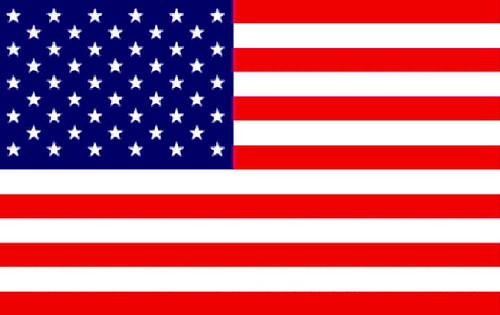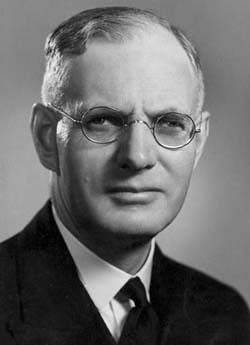 At the beginning of World War II Australia considered itself to be still apart of the British Empire, and as a result always supported Britain’s interests. In 1939 when Britain declared war on Germany, Australia followed Britain’s lead.
At the beginning of World War II Australia considered itself to be still apart of the British Empire, and as a result always supported Britain’s interests. In 1939 when Britain declared war on Germany, Australia followed Britain’s lead.In support of Britain, Australia sent troops from the 6th, 7th and 9th battalion to the Middle East, and 27000 Australians in the air force became involved in the Empire Air Training Scheme that provided air crews to fight in Britain. Australia also sent half of their navy to the Mediterranean to assist in the war effort.
 Australia considered Britain as their ‘Mother Country’ and that in times of crisis Britain would come to Australia’s aid. This belief was supported by the fact that in Singapore stood a British naval force that would act as a front line between Australia and any impending attack from Japan. However on December 10 1941 off the coast of Malaya, two British warships the Prince of Wales and the Repulse, were sunk by Japanese Bombers. This was a major blow to the British presence in the region and Britain’s naval strength at Singapore.
Australia considered Britain as their ‘Mother Country’ and that in times of crisis Britain would come to Australia’s aid. This belief was supported by the fact that in Singapore stood a British naval force that would act as a front line between Australia and any impending attack from Japan. However on December 10 1941 off the coast of Malaya, two British warships the Prince of Wales and the Repulse, were sunk by Japanese Bombers. This was a major blow to the British presence in the region and Britain’s naval strength at Singapore. By the end of December 1941, Australia became aware that they were both vulnerable and alone. For Britain could not afford to provide any more support in the South Pacific and Asia regions due to Britain’s increasing problems with Germany in Europe. The Australian government therefore turned to the United States of America for help and in an article in the Melbourne Herald on December 26 1941, Australian Prime Minister John Curtin appealed to America: “Without any inhibitions of any kind I make it quite clear that Australia looks to America, free of any pangs as to our traditional links or kinship with the United Kingdom.”
By the end of December 1941, Australia became aware that they were both vulnerable and alone. For Britain could not afford to provide any more support in the South Pacific and Asia regions due to Britain’s increasing problems with Germany in Europe. The Australian government therefore turned to the United States of America for help and in an article in the Melbourne Herald on December 26 1941, Australian Prime Minister John Curtin appealed to America: “Without any inhibitions of any kind I make it quite clear that Australia looks to America, free of any pangs as to our traditional links or kinship with the United Kingdom.” This appeal caused controversy across the world. For some it meant a disloyal rejection of Britain and for others it meant a bold recognition of Australia's desperate position. Unfortunately for Australia the U.S.A. was not too interested in taking up this role, with the U.S. president famously stating that the appeal “tasted of panic and disloyalty."
This appeal caused controversy across the world. For some it meant a disloyal rejection of Britain and for others it meant a bold recognition of Australia's desperate position. Unfortunately for Australia the U.S.A. was not too interested in taking up this role, with the U.S. president famously stating that the appeal “tasted of panic and disloyalty."By February 1942 the Japanese had defeated British and Australian forces to take control of Singapore. This was the last great protection for Australia. Soon after the fall of Singapore Australia began to endure attacks on the Australian mainland by the Japanese. First with the initial wave of air raids and bombings on the Northern Territory capital city Darwin, then the submarine incursions into Sydney Harbour and finally the sporadic attacks along the eastern coast.
 By March 1942 The American base in the Philippines came under threat by the Japanese. Australia was suddenly seen as a strategic importance to the U.S.A. and as a result of this self interest American President Franklin Roosevelt ordered his Commander in the Pacific, General Douglas MacArthur, to move his headquarters to Australia and take up the role of Supreme Commander of the South West Pacific region.
By March 1942 The American base in the Philippines came under threat by the Japanese. Australia was suddenly seen as a strategic importance to the U.S.A. and as a result of this self interest American President Franklin Roosevelt ordered his Commander in the Pacific, General Douglas MacArthur, to move his headquarters to Australia and take up the role of Supreme Commander of the South West Pacific region.In the years since World War II, Curtin's appeal to America has been seen as the beginning of Australia's alliance with the U.S. and movement away from Britain. This alliance has seen Australia follow the United States of America into many armed conflicts since World War II.
Exercises:
On a new page in your books put the Heading “Change in Relationship with America”. Under the heading write a 1/2 page summary based upon the information above. After you have completed the summary, write the following sub-headings and the questions in your books and answer them in full sentences using the links to the websites listed below.
Battle of the Philippines
1. How many planes did the Japanese use against the Philippines?
2. What time did the Japanese plan to attack and what defences did they expect?
General Douglas MacArthur
1. After the disaster of the Philippines what happened to General MacArthur?
2. What did he expect his troops to do?




 1:58 PM
1:58 PM
 Mark
Mark



0 comments:
Post a Comment